M&S Leadership Report: Motivation, Leadership Styles, and Structure
VerifiedAdded on 2019/12/04
|17
|4845
|180
Report
AI Summary
This report provides a comprehensive analysis of leadership and motivation within Marks and Spencer's (M&S). It begins with an introduction to the importance of leadership in business operations, focusing on how leadership styles affect employee motivation and organizational performance. The report explores motivational theories, including Maslow's Need Hierarchy and Herzberg's Two-Factor Theory, and their application within M&S. It examines change management models like Kurt Lewin's model in the context of M&S's current challenges. The report then delves into leadership styles, evaluating Steve Rowe's leadership approach, which combines autocratic and democratic elements. It also discusses how organizational structure contributes to a company's success. Finally, the report concludes by summarizing the key findings and implications for M&S's future.
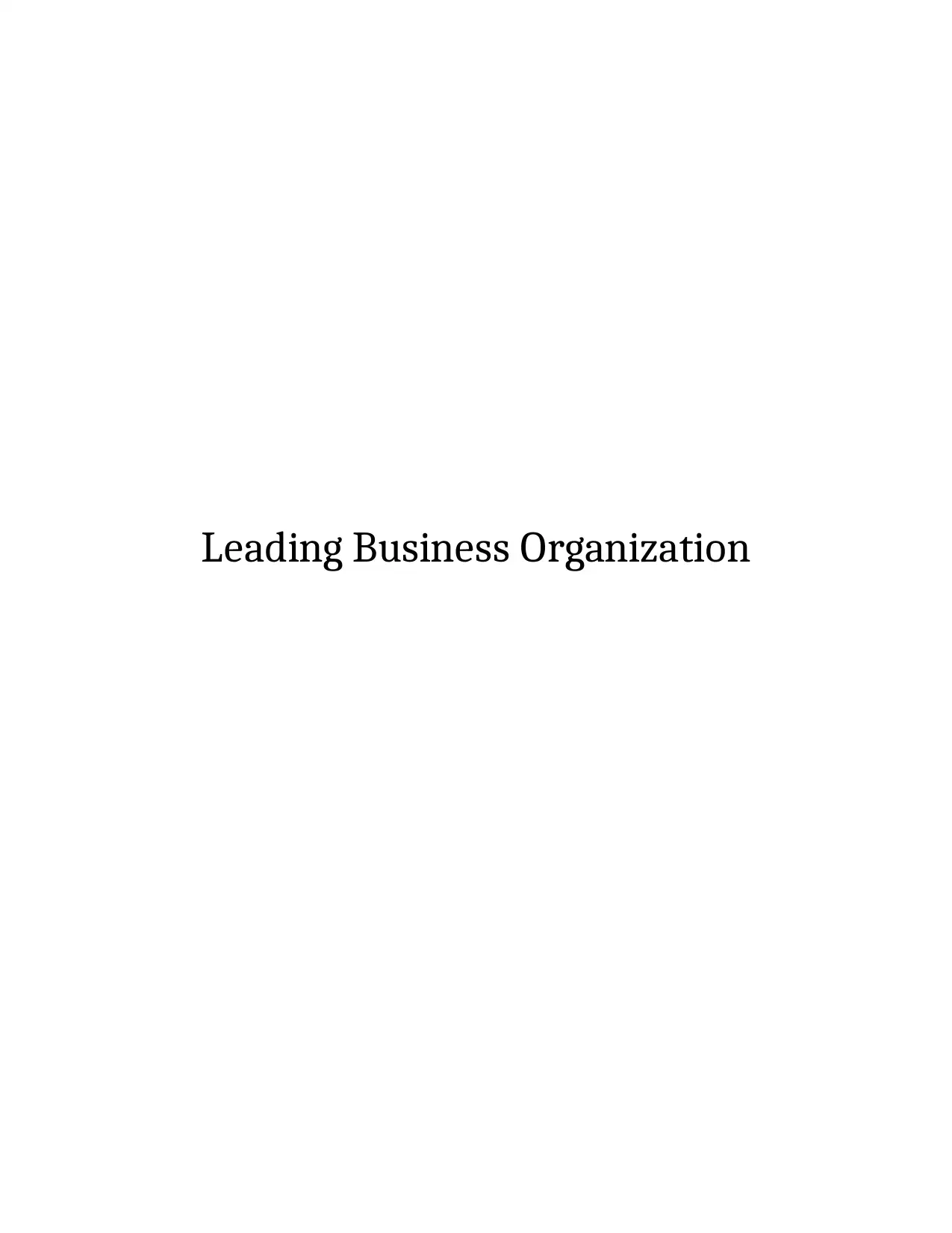
Leading Business Organization
Paraphrase This Document
Need a fresh take? Get an instant paraphrase of this document with our AI Paraphraser
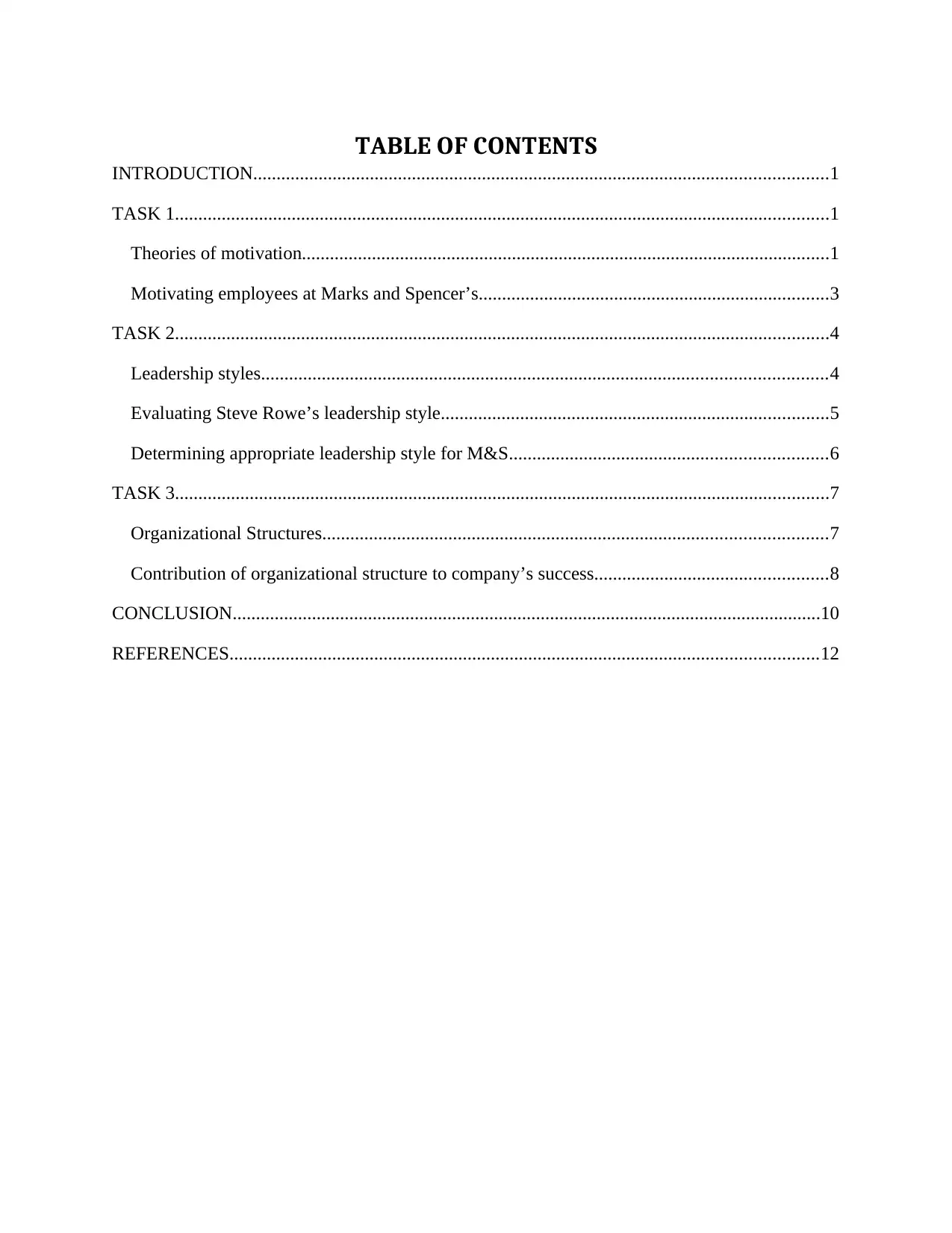
TABLE OF CONTENTS
INTRODUCTION...........................................................................................................................1
TASK 1............................................................................................................................................1
Theories of motivation.................................................................................................................1
Motivating employees at Marks and Spencer’s...........................................................................3
TASK 2............................................................................................................................................4
Leadership styles.........................................................................................................................4
Evaluating Steve Rowe’s leadership style...................................................................................5
Determining appropriate leadership style for M&S....................................................................6
TASK 3............................................................................................................................................7
Organizational Structures............................................................................................................7
Contribution of organizational structure to company’s success..................................................8
CONCLUSION..............................................................................................................................10
REFERENCES..............................................................................................................................12
INTRODUCTION...........................................................................................................................1
TASK 1............................................................................................................................................1
Theories of motivation.................................................................................................................1
Motivating employees at Marks and Spencer’s...........................................................................3
TASK 2............................................................................................................................................4
Leadership styles.........................................................................................................................4
Evaluating Steve Rowe’s leadership style...................................................................................5
Determining appropriate leadership style for M&S....................................................................6
TASK 3............................................................................................................................................7
Organizational Structures............................................................................................................7
Contribution of organizational structure to company’s success..................................................8
CONCLUSION..............................................................................................................................10
REFERENCES..............................................................................................................................12
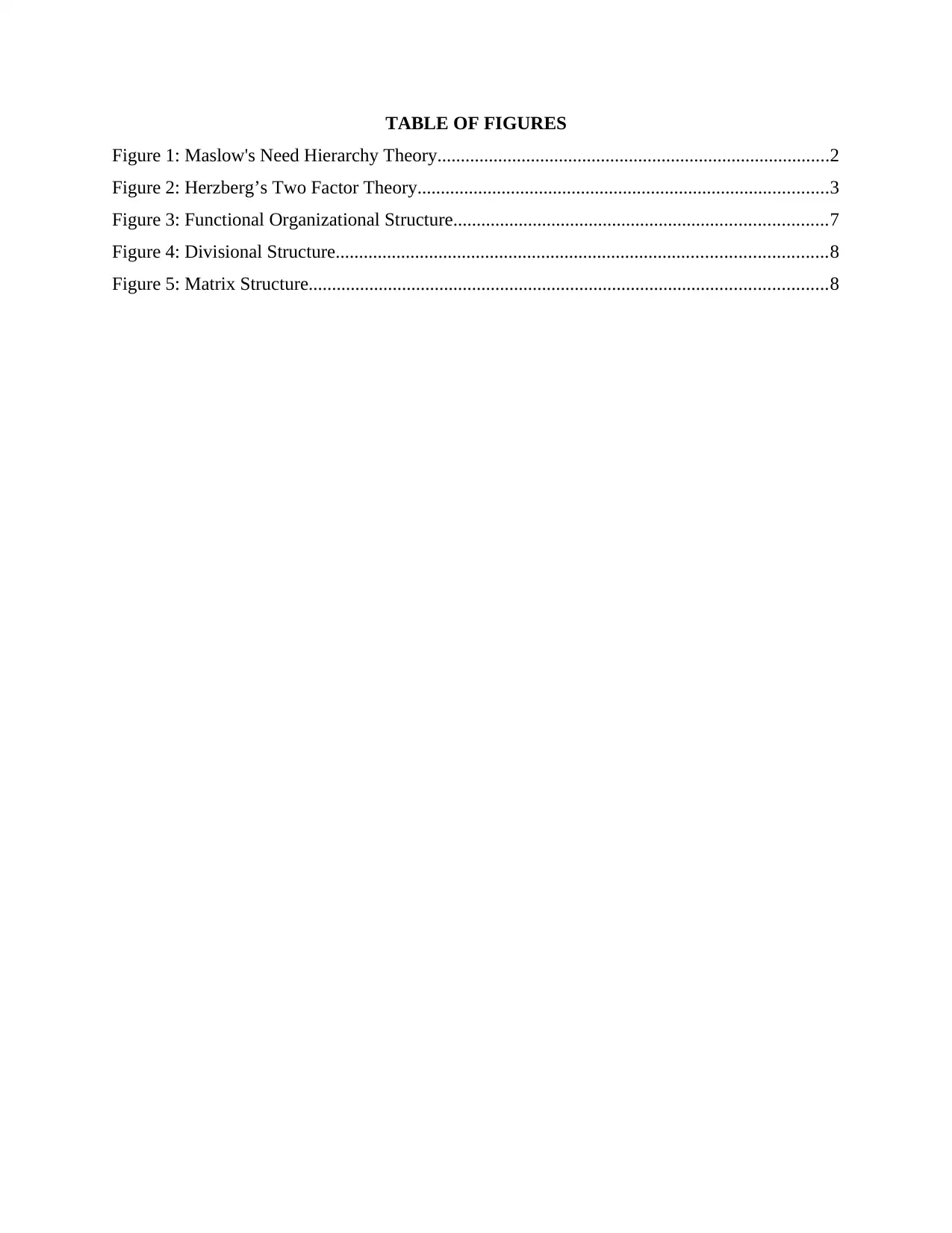
TABLE OF FIGURES
Figure 1: Maslow's Need Hierarchy Theory....................................................................................2
Figure 2: Herzberg’s Two Factor Theory........................................................................................3
Figure 3: Functional Organizational Structure................................................................................7
Figure 4: Divisional Structure.........................................................................................................8
Figure 5: Matrix Structure...............................................................................................................8
Figure 1: Maslow's Need Hierarchy Theory....................................................................................2
Figure 2: Herzberg’s Two Factor Theory........................................................................................3
Figure 3: Functional Organizational Structure................................................................................7
Figure 4: Divisional Structure.........................................................................................................8
Figure 5: Matrix Structure...............................................................................................................8
⊘ This is a preview!⊘
Do you want full access?
Subscribe today to unlock all pages.

Trusted by 1+ million students worldwide
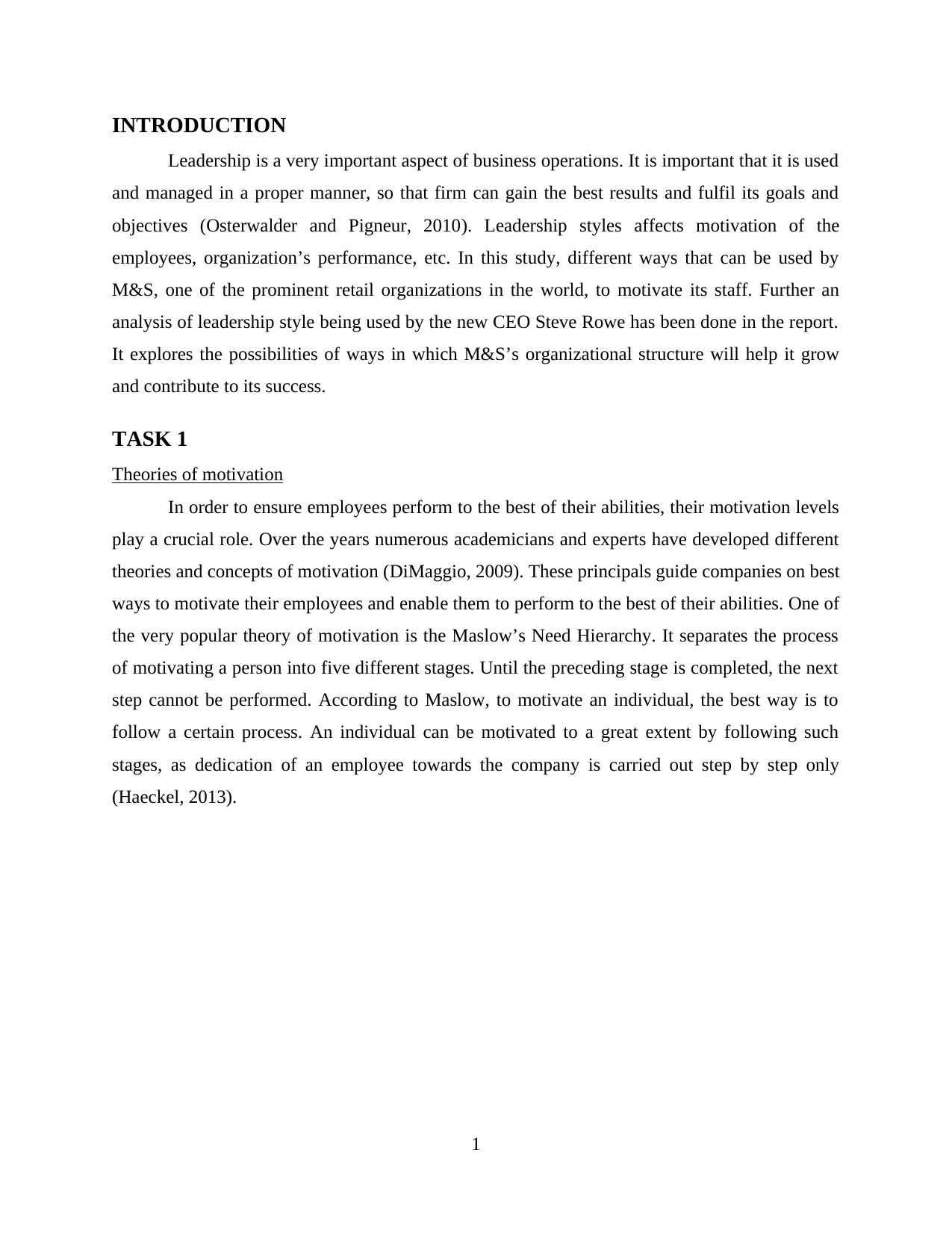
INTRODUCTION
Leadership is a very important aspect of business operations. It is important that it is used
and managed in a proper manner, so that firm can gain the best results and fulfil its goals and
objectives (Osterwalder and Pigneur, 2010). Leadership styles affects motivation of the
employees, organization’s performance, etc. In this study, different ways that can be used by
M&S, one of the prominent retail organizations in the world, to motivate its staff. Further an
analysis of leadership style being used by the new CEO Steve Rowe has been done in the report.
It explores the possibilities of ways in which M&S’s organizational structure will help it grow
and contribute to its success.
TASK 1
Theories of motivation
In order to ensure employees perform to the best of their abilities, their motivation levels
play a crucial role. Over the years numerous academicians and experts have developed different
theories and concepts of motivation (DiMaggio, 2009). These principals guide companies on best
ways to motivate their employees and enable them to perform to the best of their abilities. One of
the very popular theory of motivation is the Maslow’s Need Hierarchy. It separates the process
of motivating a person into five different stages. Until the preceding stage is completed, the next
step cannot be performed. According to Maslow, to motivate an individual, the best way is to
follow a certain process. An individual can be motivated to a great extent by following such
stages, as dedication of an employee towards the company is carried out step by step only
(Haeckel, 2013).
1
Leadership is a very important aspect of business operations. It is important that it is used
and managed in a proper manner, so that firm can gain the best results and fulfil its goals and
objectives (Osterwalder and Pigneur, 2010). Leadership styles affects motivation of the
employees, organization’s performance, etc. In this study, different ways that can be used by
M&S, one of the prominent retail organizations in the world, to motivate its staff. Further an
analysis of leadership style being used by the new CEO Steve Rowe has been done in the report.
It explores the possibilities of ways in which M&S’s organizational structure will help it grow
and contribute to its success.
TASK 1
Theories of motivation
In order to ensure employees perform to the best of their abilities, their motivation levels
play a crucial role. Over the years numerous academicians and experts have developed different
theories and concepts of motivation (DiMaggio, 2009). These principals guide companies on best
ways to motivate their employees and enable them to perform to the best of their abilities. One of
the very popular theory of motivation is the Maslow’s Need Hierarchy. It separates the process
of motivating a person into five different stages. Until the preceding stage is completed, the next
step cannot be performed. According to Maslow, to motivate an individual, the best way is to
follow a certain process. An individual can be motivated to a great extent by following such
stages, as dedication of an employee towards the company is carried out step by step only
(Haeckel, 2013).
1
Paraphrase This Document
Need a fresh take? Get an instant paraphrase of this document with our AI Paraphraser
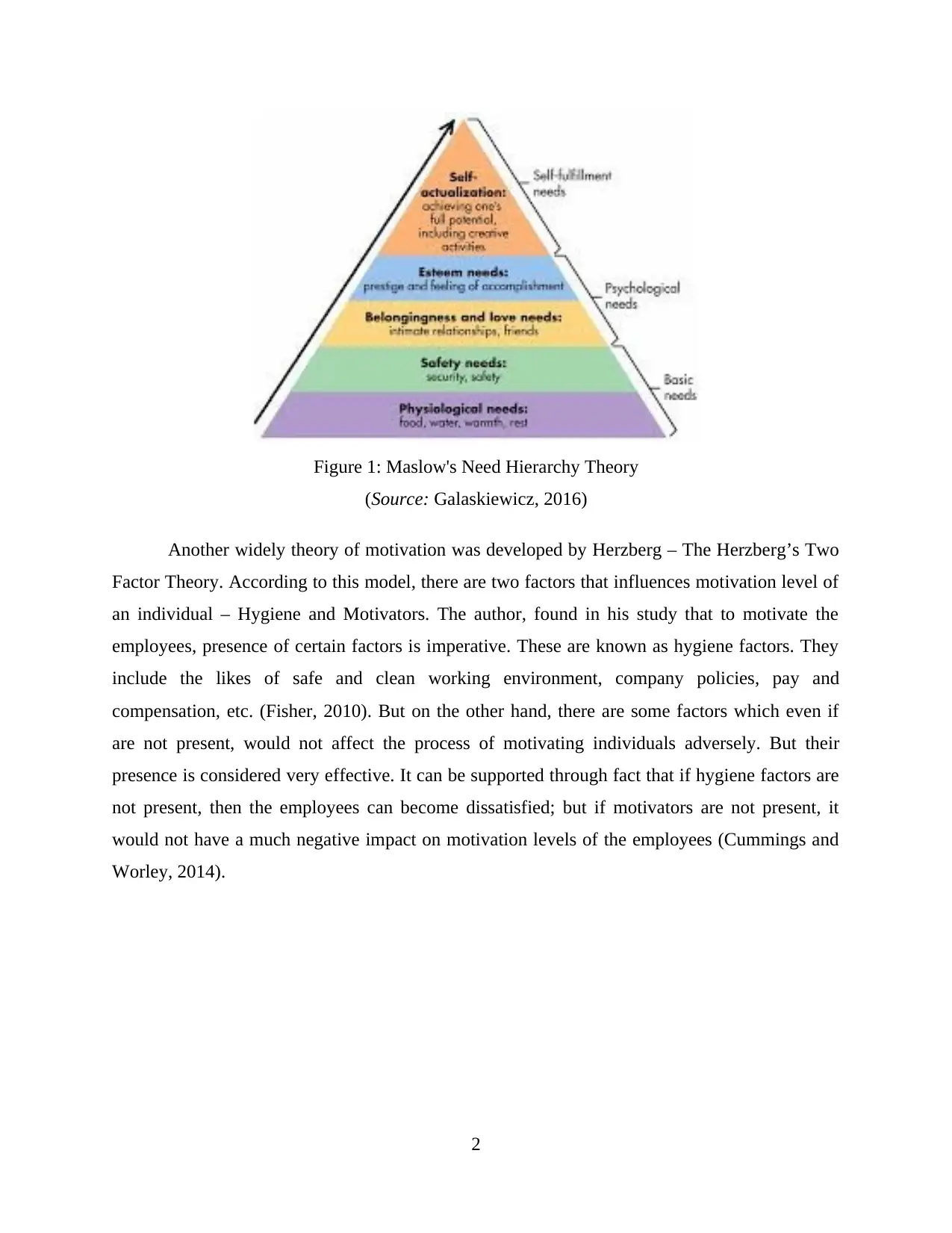
Figure 1: Maslow's Need Hierarchy Theory
(Source: Galaskiewicz, 2016)
Another widely theory of motivation was developed by Herzberg – The Herzberg’s Two
Factor Theory. According to this model, there are two factors that influences motivation level of
an individual – Hygiene and Motivators. The author, found in his study that to motivate the
employees, presence of certain factors is imperative. These are known as hygiene factors. They
include the likes of safe and clean working environment, company policies, pay and
compensation, etc. (Fisher, 2010). But on the other hand, there are some factors which even if
are not present, would not affect the process of motivating individuals adversely. But their
presence is considered very effective. It can be supported through fact that if hygiene factors are
not present, then the employees can become dissatisfied; but if motivators are not present, it
would not have a much negative impact on motivation levels of the employees (Cummings and
Worley, 2014).
2
(Source: Galaskiewicz, 2016)
Another widely theory of motivation was developed by Herzberg – The Herzberg’s Two
Factor Theory. According to this model, there are two factors that influences motivation level of
an individual – Hygiene and Motivators. The author, found in his study that to motivate the
employees, presence of certain factors is imperative. These are known as hygiene factors. They
include the likes of safe and clean working environment, company policies, pay and
compensation, etc. (Fisher, 2010). But on the other hand, there are some factors which even if
are not present, would not affect the process of motivating individuals adversely. But their
presence is considered very effective. It can be supported through fact that if hygiene factors are
not present, then the employees can become dissatisfied; but if motivators are not present, it
would not have a much negative impact on motivation levels of the employees (Cummings and
Worley, 2014).
2
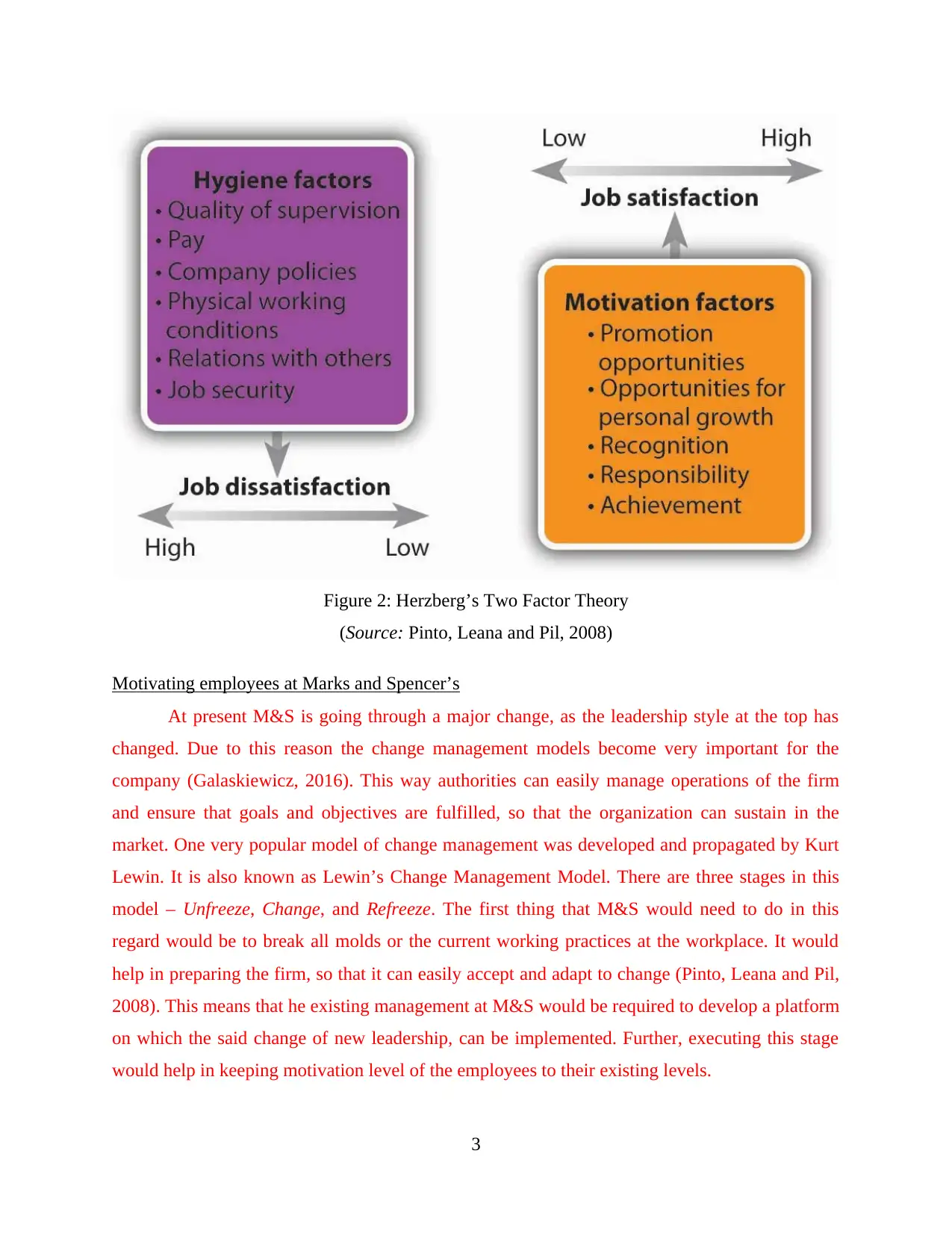
Figure 2: Herzberg’s Two Factor Theory
(Source: Pinto, Leana and Pil, 2008)
Motivating employees at Marks and Spencer’s
At present M&S is going through a major change, as the leadership style at the top has
changed. Due to this reason the change management models become very important for the
company (Galaskiewicz, 2016). This way authorities can easily manage operations of the firm
and ensure that goals and objectives are fulfilled, so that the organization can sustain in the
market. One very popular model of change management was developed and propagated by Kurt
Lewin. It is also known as Lewin’s Change Management Model. There are three stages in this
model – Unfreeze, Change, and Refreeze. The first thing that M&S would need to do in this
regard would be to break all molds or the current working practices at the workplace. It would
help in preparing the firm, so that it can easily accept and adapt to change (Pinto, Leana and Pil,
2008). This means that he existing management at M&S would be required to develop a platform
on which the said change of new leadership, can be implemented. Further, executing this stage
would help in keeping motivation level of the employees to their existing levels.
3
(Source: Pinto, Leana and Pil, 2008)
Motivating employees at Marks and Spencer’s
At present M&S is going through a major change, as the leadership style at the top has
changed. Due to this reason the change management models become very important for the
company (Galaskiewicz, 2016). This way authorities can easily manage operations of the firm
and ensure that goals and objectives are fulfilled, so that the organization can sustain in the
market. One very popular model of change management was developed and propagated by Kurt
Lewin. It is also known as Lewin’s Change Management Model. There are three stages in this
model – Unfreeze, Change, and Refreeze. The first thing that M&S would need to do in this
regard would be to break all molds or the current working practices at the workplace. It would
help in preparing the firm, so that it can easily accept and adapt to change (Pinto, Leana and Pil,
2008). This means that he existing management at M&S would be required to develop a platform
on which the said change of new leadership, can be implemented. Further, executing this stage
would help in keeping motivation level of the employees to their existing levels.
3
⊘ This is a preview!⊘
Do you want full access?
Subscribe today to unlock all pages.

Trusted by 1+ million students worldwide
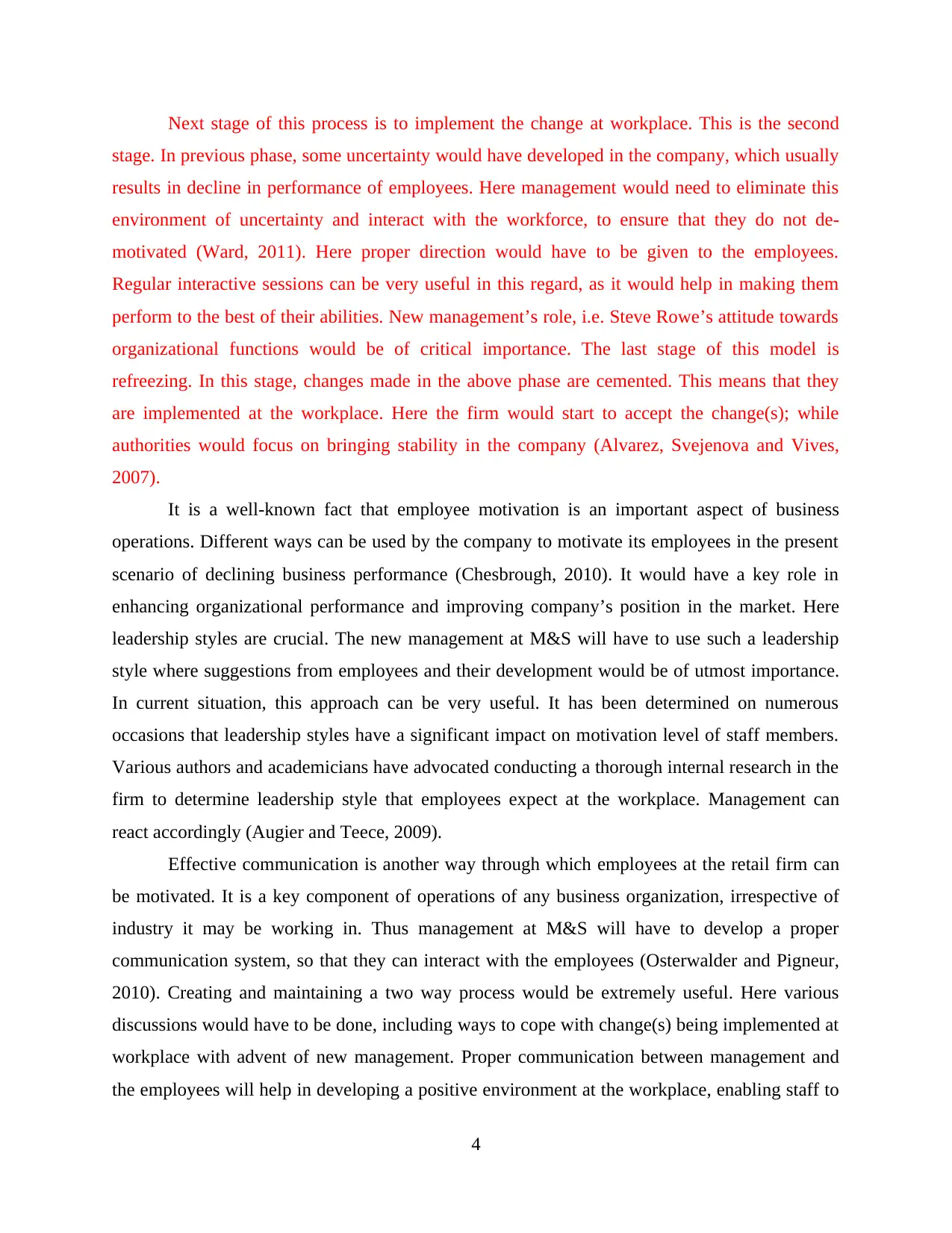
Next stage of this process is to implement the change at workplace. This is the second
stage. In previous phase, some uncertainty would have developed in the company, which usually
results in decline in performance of employees. Here management would need to eliminate this
environment of uncertainty and interact with the workforce, to ensure that they do not de-
motivated (Ward, 2011). Here proper direction would have to be given to the employees.
Regular interactive sessions can be very useful in this regard, as it would help in making them
perform to the best of their abilities. New management’s role, i.e. Steve Rowe’s attitude towards
organizational functions would be of critical importance. The last stage of this model is
refreezing. In this stage, changes made in the above phase are cemented. This means that they
are implemented at the workplace. Here the firm would start to accept the change(s); while
authorities would focus on bringing stability in the company (Alvarez, Svejenova and Vives,
2007).
It is a well-known fact that employee motivation is an important aspect of business
operations. Different ways can be used by the company to motivate its employees in the present
scenario of declining business performance (Chesbrough, 2010). It would have a key role in
enhancing organizational performance and improving company’s position in the market. Here
leadership styles are crucial. The new management at M&S will have to use such a leadership
style where suggestions from employees and their development would be of utmost importance.
In current situation, this approach can be very useful. It has been determined on numerous
occasions that leadership styles have a significant impact on motivation level of staff members.
Various authors and academicians have advocated conducting a thorough internal research in the
firm to determine leadership style that employees expect at the workplace. Management can
react accordingly (Augier and Teece, 2009).
Effective communication is another way through which employees at the retail firm can
be motivated. It is a key component of operations of any business organization, irrespective of
industry it may be working in. Thus management at M&S will have to develop a proper
communication system, so that they can interact with the employees (Osterwalder and Pigneur,
2010). Creating and maintaining a two way process would be extremely useful. Here various
discussions would have to be done, including ways to cope with change(s) being implemented at
workplace with advent of new management. Proper communication between management and
the employees will help in developing a positive environment at the workplace, enabling staff to
4
stage. In previous phase, some uncertainty would have developed in the company, which usually
results in decline in performance of employees. Here management would need to eliminate this
environment of uncertainty and interact with the workforce, to ensure that they do not de-
motivated (Ward, 2011). Here proper direction would have to be given to the employees.
Regular interactive sessions can be very useful in this regard, as it would help in making them
perform to the best of their abilities. New management’s role, i.e. Steve Rowe’s attitude towards
organizational functions would be of critical importance. The last stage of this model is
refreezing. In this stage, changes made in the above phase are cemented. This means that they
are implemented at the workplace. Here the firm would start to accept the change(s); while
authorities would focus on bringing stability in the company (Alvarez, Svejenova and Vives,
2007).
It is a well-known fact that employee motivation is an important aspect of business
operations. Different ways can be used by the company to motivate its employees in the present
scenario of declining business performance (Chesbrough, 2010). It would have a key role in
enhancing organizational performance and improving company’s position in the market. Here
leadership styles are crucial. The new management at M&S will have to use such a leadership
style where suggestions from employees and their development would be of utmost importance.
In current situation, this approach can be very useful. It has been determined on numerous
occasions that leadership styles have a significant impact on motivation level of staff members.
Various authors and academicians have advocated conducting a thorough internal research in the
firm to determine leadership style that employees expect at the workplace. Management can
react accordingly (Augier and Teece, 2009).
Effective communication is another way through which employees at the retail firm can
be motivated. It is a key component of operations of any business organization, irrespective of
industry it may be working in. Thus management at M&S will have to develop a proper
communication system, so that they can interact with the employees (Osterwalder and Pigneur,
2010). Creating and maintaining a two way process would be extremely useful. Here various
discussions would have to be done, including ways to cope with change(s) being implemented at
workplace with advent of new management. Proper communication between management and
the employees will help in developing a positive environment at the workplace, enabling staff to
4
Paraphrase This Document
Need a fresh take? Get an instant paraphrase of this document with our AI Paraphraser
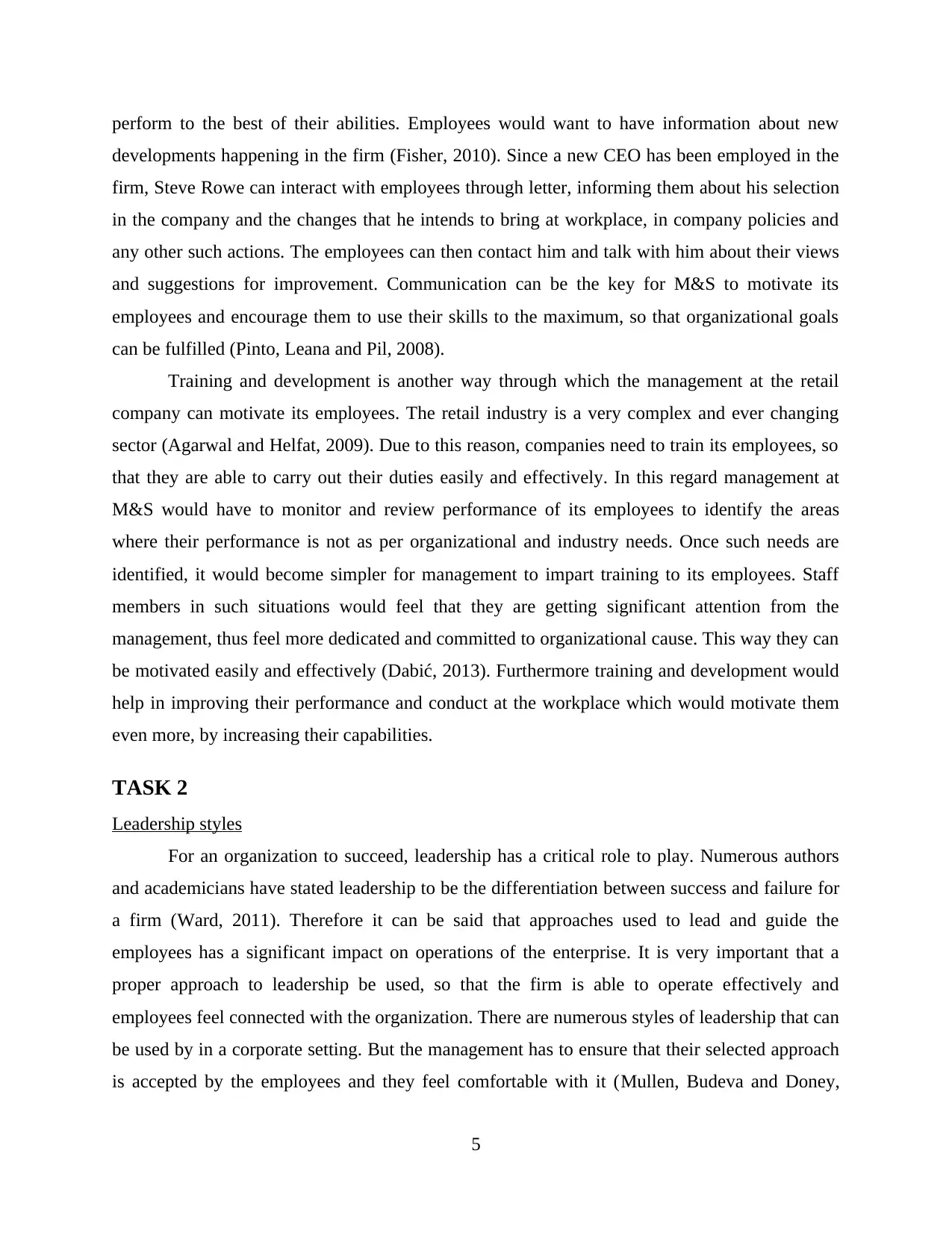
perform to the best of their abilities. Employees would want to have information about new
developments happening in the firm (Fisher, 2010). Since a new CEO has been employed in the
firm, Steve Rowe can interact with employees through letter, informing them about his selection
in the company and the changes that he intends to bring at workplace, in company policies and
any other such actions. The employees can then contact him and talk with him about their views
and suggestions for improvement. Communication can be the key for M&S to motivate its
employees and encourage them to use their skills to the maximum, so that organizational goals
can be fulfilled (Pinto, Leana and Pil, 2008).
Training and development is another way through which the management at the retail
company can motivate its employees. The retail industry is a very complex and ever changing
sector (Agarwal and Helfat, 2009). Due to this reason, companies need to train its employees, so
that they are able to carry out their duties easily and effectively. In this regard management at
M&S would have to monitor and review performance of its employees to identify the areas
where their performance is not as per organizational and industry needs. Once such needs are
identified, it would become simpler for management to impart training to its employees. Staff
members in such situations would feel that they are getting significant attention from the
management, thus feel more dedicated and committed to organizational cause. This way they can
be motivated easily and effectively (Dabić, 2013). Furthermore training and development would
help in improving their performance and conduct at the workplace which would motivate them
even more, by increasing their capabilities.
TASK 2
Leadership styles
For an organization to succeed, leadership has a critical role to play. Numerous authors
and academicians have stated leadership to be the differentiation between success and failure for
a firm (Ward, 2011). Therefore it can be said that approaches used to lead and guide the
employees has a significant impact on operations of the enterprise. It is very important that a
proper approach to leadership be used, so that the firm is able to operate effectively and
employees feel connected with the organization. There are numerous styles of leadership that can
be used by in a corporate setting. But the management has to ensure that their selected approach
is accepted by the employees and they feel comfortable with it (Mullen, Budeva and Doney,
5
developments happening in the firm (Fisher, 2010). Since a new CEO has been employed in the
firm, Steve Rowe can interact with employees through letter, informing them about his selection
in the company and the changes that he intends to bring at workplace, in company policies and
any other such actions. The employees can then contact him and talk with him about their views
and suggestions for improvement. Communication can be the key for M&S to motivate its
employees and encourage them to use their skills to the maximum, so that organizational goals
can be fulfilled (Pinto, Leana and Pil, 2008).
Training and development is another way through which the management at the retail
company can motivate its employees. The retail industry is a very complex and ever changing
sector (Agarwal and Helfat, 2009). Due to this reason, companies need to train its employees, so
that they are able to carry out their duties easily and effectively. In this regard management at
M&S would have to monitor and review performance of its employees to identify the areas
where their performance is not as per organizational and industry needs. Once such needs are
identified, it would become simpler for management to impart training to its employees. Staff
members in such situations would feel that they are getting significant attention from the
management, thus feel more dedicated and committed to organizational cause. This way they can
be motivated easily and effectively (Dabić, 2013). Furthermore training and development would
help in improving their performance and conduct at the workplace which would motivate them
even more, by increasing their capabilities.
TASK 2
Leadership styles
For an organization to succeed, leadership has a critical role to play. Numerous authors
and academicians have stated leadership to be the differentiation between success and failure for
a firm (Ward, 2011). Therefore it can be said that approaches used to lead and guide the
employees has a significant impact on operations of the enterprise. It is very important that a
proper approach to leadership be used, so that the firm is able to operate effectively and
employees feel connected with the organization. There are numerous styles of leadership that can
be used by in a corporate setting. But the management has to ensure that their selected approach
is accepted by the employees and they feel comfortable with it (Mullen, Budeva and Doney,
5
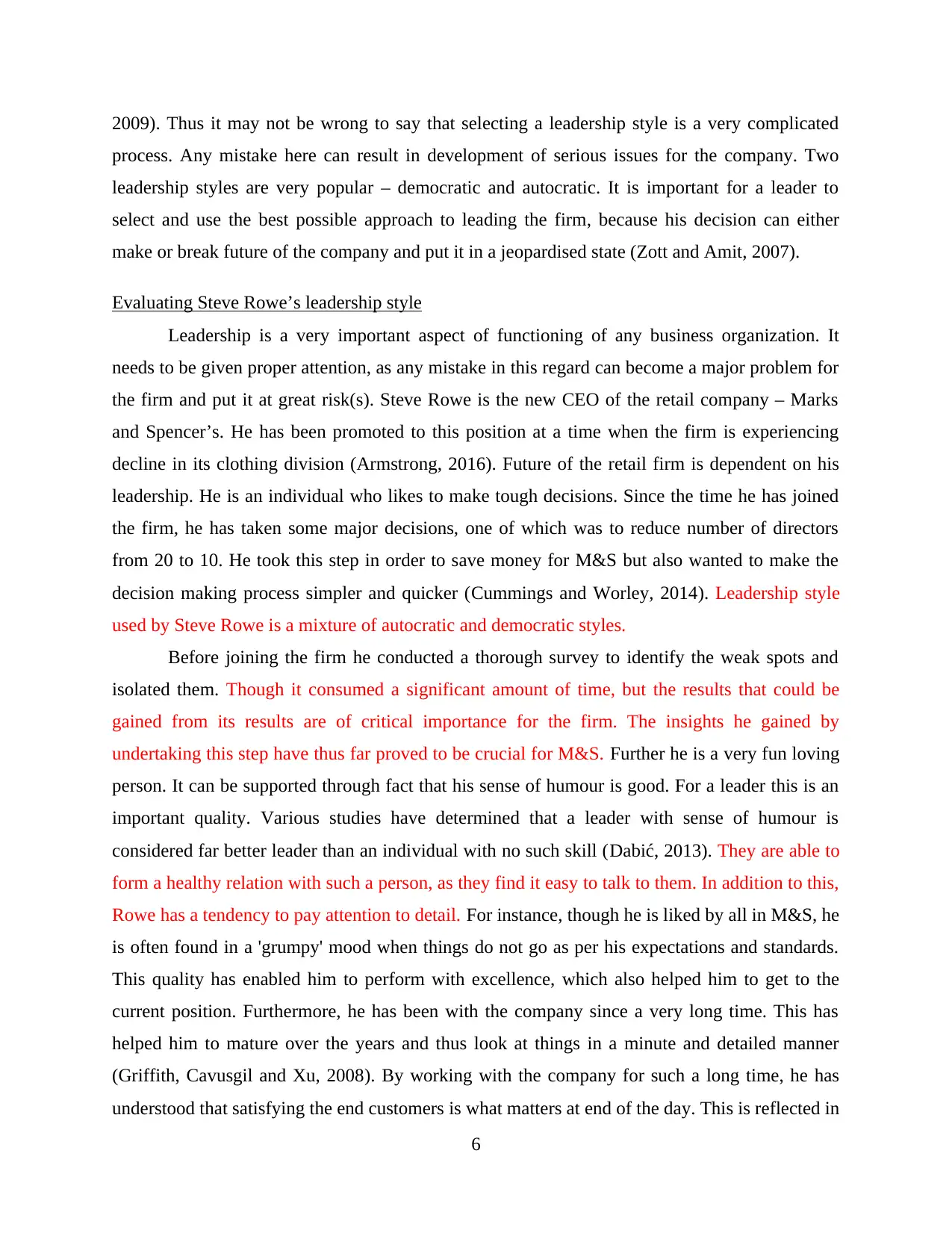
2009). Thus it may not be wrong to say that selecting a leadership style is a very complicated
process. Any mistake here can result in development of serious issues for the company. Two
leadership styles are very popular – democratic and autocratic. It is important for a leader to
select and use the best possible approach to leading the firm, because his decision can either
make or break future of the company and put it in a jeopardised state (Zott and Amit, 2007).
Evaluating Steve Rowe’s leadership style
Leadership is a very important aspect of functioning of any business organization. It
needs to be given proper attention, as any mistake in this regard can become a major problem for
the firm and put it at great risk(s). Steve Rowe is the new CEO of the retail company – Marks
and Spencer’s. He has been promoted to this position at a time when the firm is experiencing
decline in its clothing division (Armstrong, 2016). Future of the retail firm is dependent on his
leadership. He is an individual who likes to make tough decisions. Since the time he has joined
the firm, he has taken some major decisions, one of which was to reduce number of directors
from 20 to 10. He took this step in order to save money for M&S but also wanted to make the
decision making process simpler and quicker (Cummings and Worley, 2014). Leadership style
used by Steve Rowe is a mixture of autocratic and democratic styles.
Before joining the firm he conducted a thorough survey to identify the weak spots and
isolated them. Though it consumed a significant amount of time, but the results that could be
gained from its results are of critical importance for the firm. The insights he gained by
undertaking this step have thus far proved to be crucial for M&S. Further he is a very fun loving
person. It can be supported through fact that his sense of humour is good. For a leader this is an
important quality. Various studies have determined that a leader with sense of humour is
considered far better leader than an individual with no such skill (Dabić, 2013). They are able to
form a healthy relation with such a person, as they find it easy to talk to them. In addition to this,
Rowe has a tendency to pay attention to detail. For instance, though he is liked by all in M&S, he
is often found in a 'grumpy' mood when things do not go as per his expectations and standards.
This quality has enabled him to perform with excellence, which also helped him to get to the
current position. Furthermore, he has been with the company since a very long time. This has
helped him to mature over the years and thus look at things in a minute and detailed manner
(Griffith, Cavusgil and Xu, 2008). By working with the company for such a long time, he has
understood that satisfying the end customers is what matters at end of the day. This is reflected in
6
process. Any mistake here can result in development of serious issues for the company. Two
leadership styles are very popular – democratic and autocratic. It is important for a leader to
select and use the best possible approach to leading the firm, because his decision can either
make or break future of the company and put it in a jeopardised state (Zott and Amit, 2007).
Evaluating Steve Rowe’s leadership style
Leadership is a very important aspect of functioning of any business organization. It
needs to be given proper attention, as any mistake in this regard can become a major problem for
the firm and put it at great risk(s). Steve Rowe is the new CEO of the retail company – Marks
and Spencer’s. He has been promoted to this position at a time when the firm is experiencing
decline in its clothing division (Armstrong, 2016). Future of the retail firm is dependent on his
leadership. He is an individual who likes to make tough decisions. Since the time he has joined
the firm, he has taken some major decisions, one of which was to reduce number of directors
from 20 to 10. He took this step in order to save money for M&S but also wanted to make the
decision making process simpler and quicker (Cummings and Worley, 2014). Leadership style
used by Steve Rowe is a mixture of autocratic and democratic styles.
Before joining the firm he conducted a thorough survey to identify the weak spots and
isolated them. Though it consumed a significant amount of time, but the results that could be
gained from its results are of critical importance for the firm. The insights he gained by
undertaking this step have thus far proved to be crucial for M&S. Further he is a very fun loving
person. It can be supported through fact that his sense of humour is good. For a leader this is an
important quality. Various studies have determined that a leader with sense of humour is
considered far better leader than an individual with no such skill (Dabić, 2013). They are able to
form a healthy relation with such a person, as they find it easy to talk to them. In addition to this,
Rowe has a tendency to pay attention to detail. For instance, though he is liked by all in M&S, he
is often found in a 'grumpy' mood when things do not go as per his expectations and standards.
This quality has enabled him to perform with excellence, which also helped him to get to the
current position. Furthermore, he has been with the company since a very long time. This has
helped him to mature over the years and thus look at things in a minute and detailed manner
(Griffith, Cavusgil and Xu, 2008). By working with the company for such a long time, he has
understood that satisfying the end customers is what matters at end of the day. This is reflected in
6
⊘ This is a preview!⊘
Do you want full access?
Subscribe today to unlock all pages.

Trusted by 1+ million students worldwide
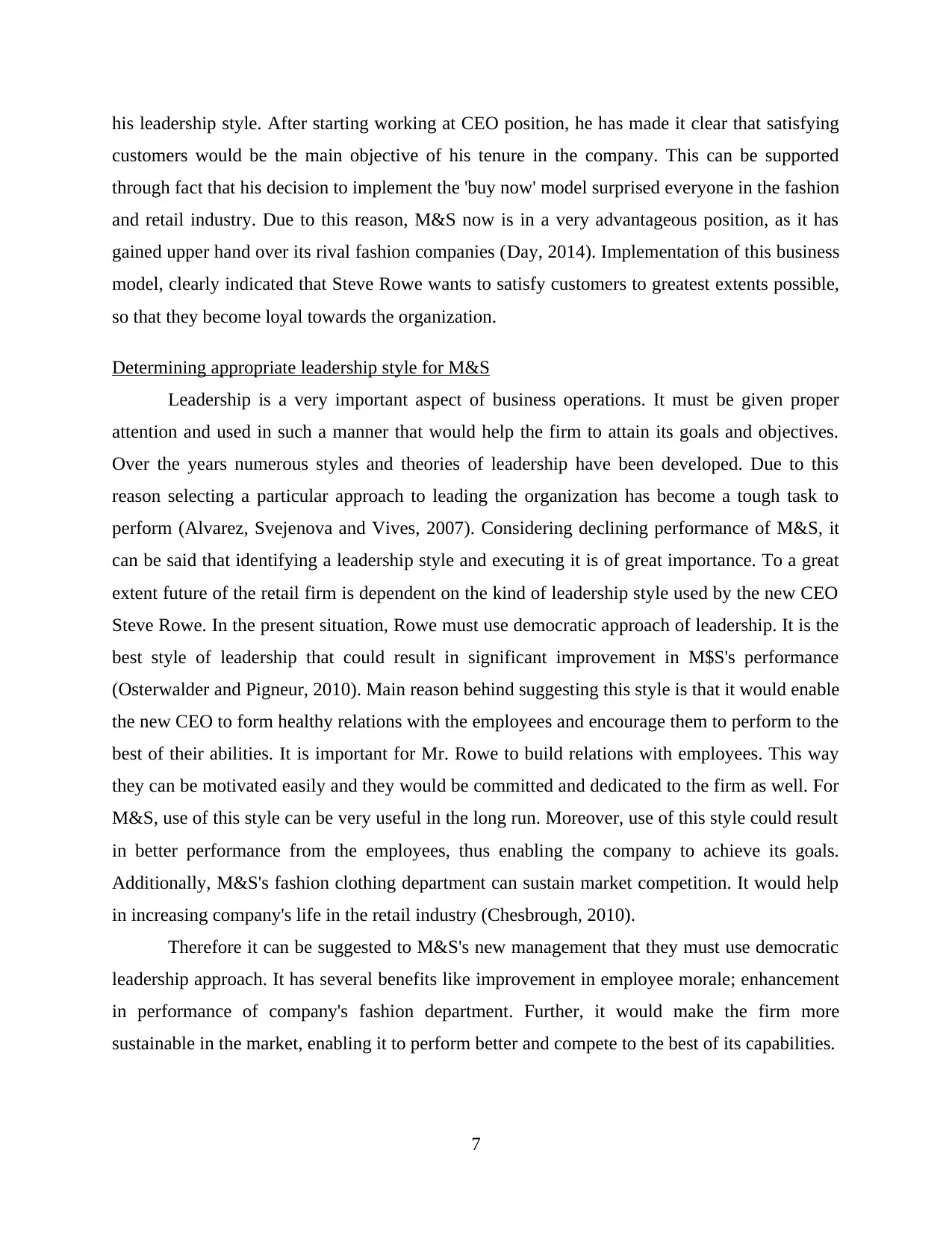
his leadership style. After starting working at CEO position, he has made it clear that satisfying
customers would be the main objective of his tenure in the company. This can be supported
through fact that his decision to implement the 'buy now' model surprised everyone in the fashion
and retail industry. Due to this reason, M&S now is in a very advantageous position, as it has
gained upper hand over its rival fashion companies (Day, 2014). Implementation of this business
model, clearly indicated that Steve Rowe wants to satisfy customers to greatest extents possible,
so that they become loyal towards the organization.
Determining appropriate leadership style for M&S
Leadership is a very important aspect of business operations. It must be given proper
attention and used in such a manner that would help the firm to attain its goals and objectives.
Over the years numerous styles and theories of leadership have been developed. Due to this
reason selecting a particular approach to leading the organization has become a tough task to
perform (Alvarez, Svejenova and Vives, 2007). Considering declining performance of M&S, it
can be said that identifying a leadership style and executing it is of great importance. To a great
extent future of the retail firm is dependent on the kind of leadership style used by the new CEO
Steve Rowe. In the present situation, Rowe must use democratic approach of leadership. It is the
best style of leadership that could result in significant improvement in M$S's performance
(Osterwalder and Pigneur, 2010). Main reason behind suggesting this style is that it would enable
the new CEO to form healthy relations with the employees and encourage them to perform to the
best of their abilities. It is important for Mr. Rowe to build relations with employees. This way
they can be motivated easily and they would be committed and dedicated to the firm as well. For
M&S, use of this style can be very useful in the long run. Moreover, use of this style could result
in better performance from the employees, thus enabling the company to achieve its goals.
Additionally, M&S's fashion clothing department can sustain market competition. It would help
in increasing company's life in the retail industry (Chesbrough, 2010).
Therefore it can be suggested to M&S's new management that they must use democratic
leadership approach. It has several benefits like improvement in employee morale; enhancement
in performance of company's fashion department. Further, it would make the firm more
sustainable in the market, enabling it to perform better and compete to the best of its capabilities.
7
customers would be the main objective of his tenure in the company. This can be supported
through fact that his decision to implement the 'buy now' model surprised everyone in the fashion
and retail industry. Due to this reason, M&S now is in a very advantageous position, as it has
gained upper hand over its rival fashion companies (Day, 2014). Implementation of this business
model, clearly indicated that Steve Rowe wants to satisfy customers to greatest extents possible,
so that they become loyal towards the organization.
Determining appropriate leadership style for M&S
Leadership is a very important aspect of business operations. It must be given proper
attention and used in such a manner that would help the firm to attain its goals and objectives.
Over the years numerous styles and theories of leadership have been developed. Due to this
reason selecting a particular approach to leading the organization has become a tough task to
perform (Alvarez, Svejenova and Vives, 2007). Considering declining performance of M&S, it
can be said that identifying a leadership style and executing it is of great importance. To a great
extent future of the retail firm is dependent on the kind of leadership style used by the new CEO
Steve Rowe. In the present situation, Rowe must use democratic approach of leadership. It is the
best style of leadership that could result in significant improvement in M$S's performance
(Osterwalder and Pigneur, 2010). Main reason behind suggesting this style is that it would enable
the new CEO to form healthy relations with the employees and encourage them to perform to the
best of their abilities. It is important for Mr. Rowe to build relations with employees. This way
they can be motivated easily and they would be committed and dedicated to the firm as well. For
M&S, use of this style can be very useful in the long run. Moreover, use of this style could result
in better performance from the employees, thus enabling the company to achieve its goals.
Additionally, M&S's fashion clothing department can sustain market competition. It would help
in increasing company's life in the retail industry (Chesbrough, 2010).
Therefore it can be suggested to M&S's new management that they must use democratic
leadership approach. It has several benefits like improvement in employee morale; enhancement
in performance of company's fashion department. Further, it would make the firm more
sustainable in the market, enabling it to perform better and compete to the best of its capabilities.
7
Paraphrase This Document
Need a fresh take? Get an instant paraphrase of this document with our AI Paraphraser
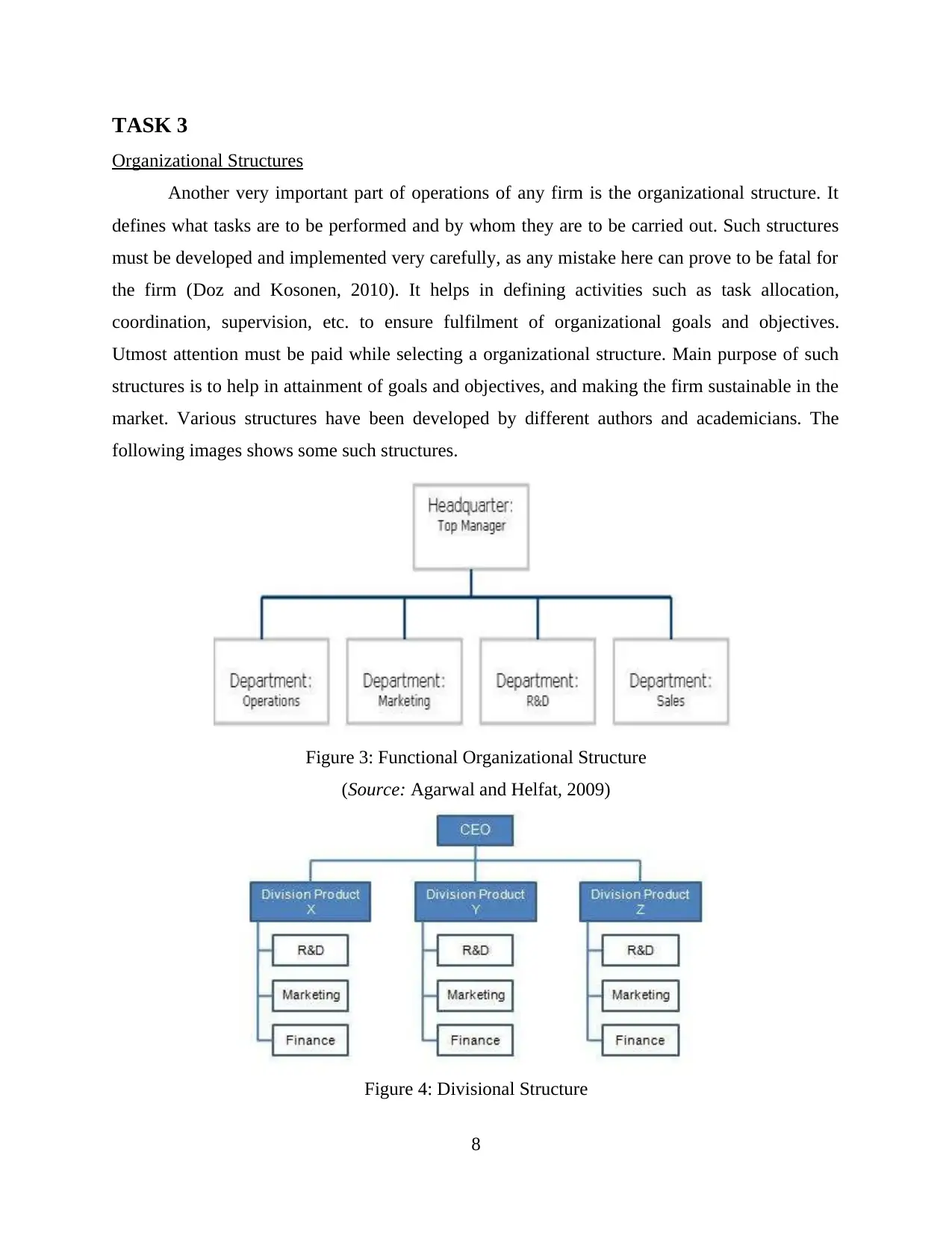
TASK 3
Organizational Structures
Another very important part of operations of any firm is the organizational structure. It
defines what tasks are to be performed and by whom they are to be carried out. Such structures
must be developed and implemented very carefully, as any mistake here can prove to be fatal for
the firm (Doz and Kosonen, 2010). It helps in defining activities such as task allocation,
coordination, supervision, etc. to ensure fulfilment of organizational goals and objectives.
Utmost attention must be paid while selecting a organizational structure. Main purpose of such
structures is to help in attainment of goals and objectives, and making the firm sustainable in the
market. Various structures have been developed by different authors and academicians. The
following images shows some such structures.
Figure 3: Functional Organizational Structure
(Source: Agarwal and Helfat, 2009)
Figure 4: Divisional Structure
8
Organizational Structures
Another very important part of operations of any firm is the organizational structure. It
defines what tasks are to be performed and by whom they are to be carried out. Such structures
must be developed and implemented very carefully, as any mistake here can prove to be fatal for
the firm (Doz and Kosonen, 2010). It helps in defining activities such as task allocation,
coordination, supervision, etc. to ensure fulfilment of organizational goals and objectives.
Utmost attention must be paid while selecting a organizational structure. Main purpose of such
structures is to help in attainment of goals and objectives, and making the firm sustainable in the
market. Various structures have been developed by different authors and academicians. The
following images shows some such structures.
Figure 3: Functional Organizational Structure
(Source: Agarwal and Helfat, 2009)
Figure 4: Divisional Structure
8
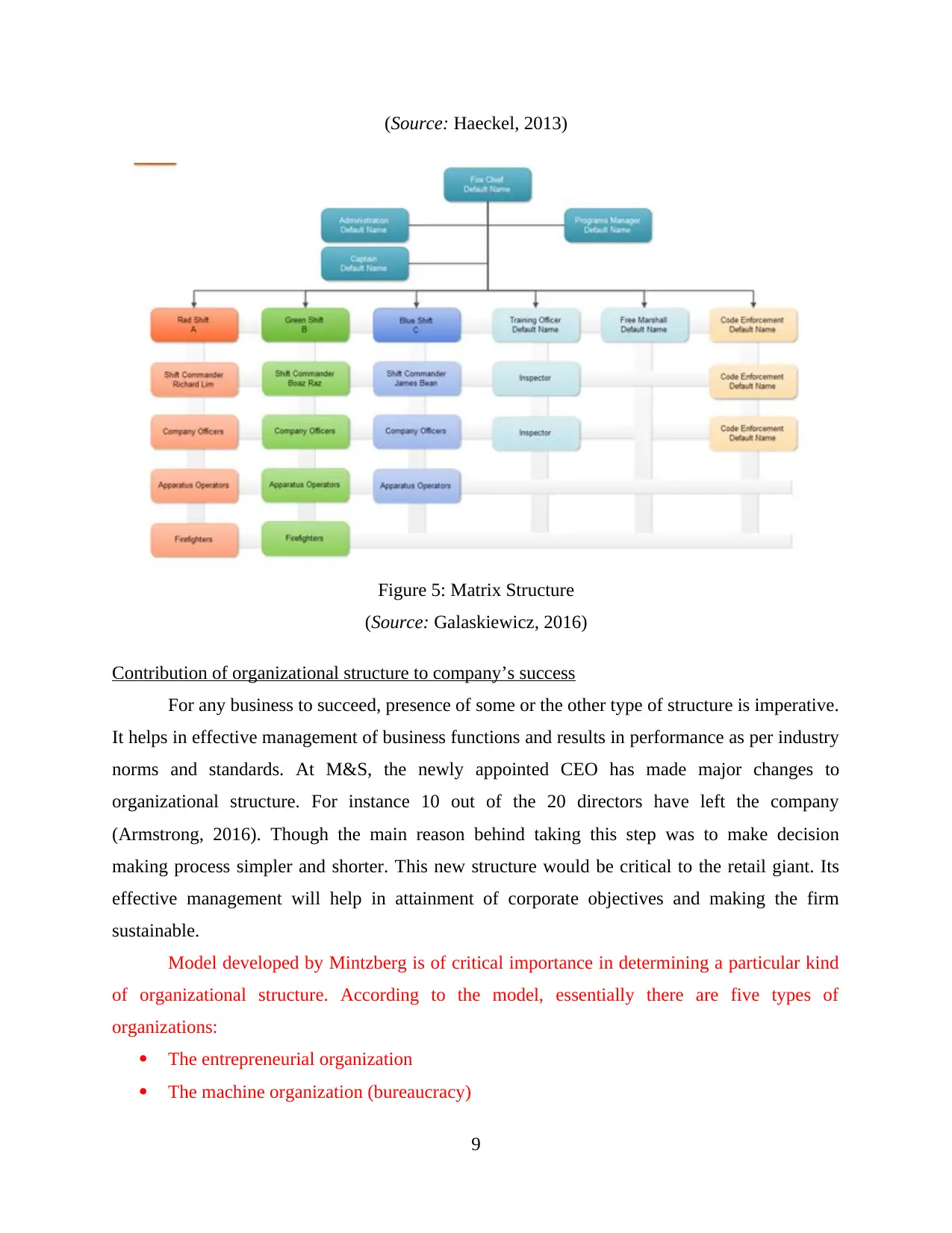
(Source: Haeckel, 2013)
Figure 5: Matrix Structure
(Source: Galaskiewicz, 2016)
Contribution of organizational structure to company’s success
For any business to succeed, presence of some or the other type of structure is imperative.
It helps in effective management of business functions and results in performance as per industry
norms and standards. At M&S, the newly appointed CEO has made major changes to
organizational structure. For instance 10 out of the 20 directors have left the company
(Armstrong, 2016). Though the main reason behind taking this step was to make decision
making process simpler and shorter. This new structure would be critical to the retail giant. Its
effective management will help in attainment of corporate objectives and making the firm
sustainable.
Model developed by Mintzberg is of critical importance in determining a particular kind
of organizational structure. According to the model, essentially there are five types of
organizations:
The entrepreneurial organization
The machine organization (bureaucracy)
9
Figure 5: Matrix Structure
(Source: Galaskiewicz, 2016)
Contribution of organizational structure to company’s success
For any business to succeed, presence of some or the other type of structure is imperative.
It helps in effective management of business functions and results in performance as per industry
norms and standards. At M&S, the newly appointed CEO has made major changes to
organizational structure. For instance 10 out of the 20 directors have left the company
(Armstrong, 2016). Though the main reason behind taking this step was to make decision
making process simpler and shorter. This new structure would be critical to the retail giant. Its
effective management will help in attainment of corporate objectives and making the firm
sustainable.
Model developed by Mintzberg is of critical importance in determining a particular kind
of organizational structure. According to the model, essentially there are five types of
organizations:
The entrepreneurial organization
The machine organization (bureaucracy)
9
⊘ This is a preview!⊘
Do you want full access?
Subscribe today to unlock all pages.

Trusted by 1+ million students worldwide
1 out of 17
Related Documents
Your All-in-One AI-Powered Toolkit for Academic Success.
+13062052269
info@desklib.com
Available 24*7 on WhatsApp / Email
![[object Object]](/_next/static/media/star-bottom.7253800d.svg)
Unlock your academic potential
Copyright © 2020–2025 A2Z Services. All Rights Reserved. Developed and managed by ZUCOL.





